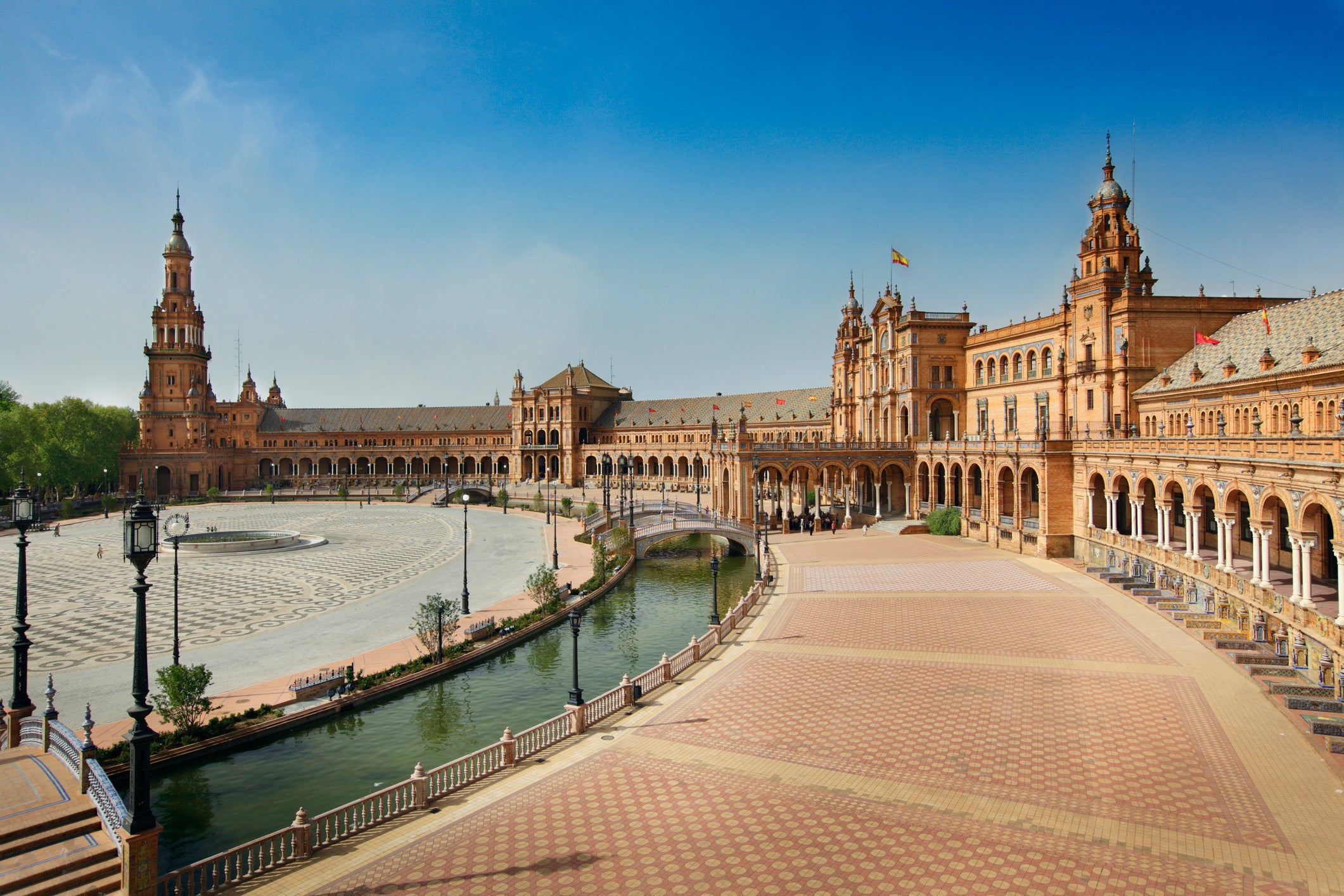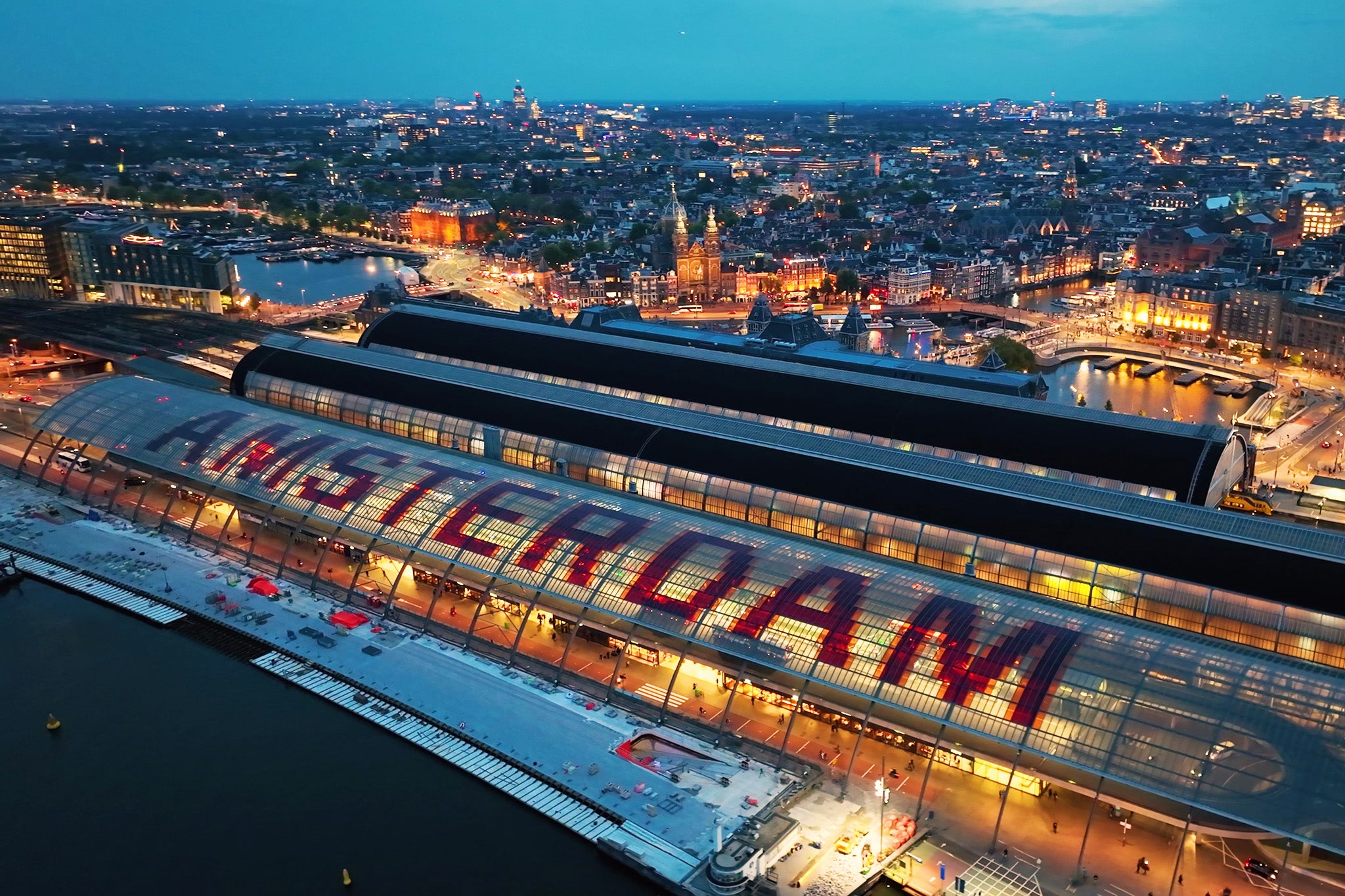What is the best way to tour Andalucia’s golden triangle?
Simon Calder answers your questions on Spain, day trips abroad, and cruise excursions


Q I want to travel to Seville, Cordoba and Granada in October this year with my wife for a week or so from Manchester. I thought about flying from Manchester to Seville, then travelling by train to Cordoba, then Granada and back to Seville to fly home. Would an organised tour be best? And what is the ideal time to devote to each city?
Robert C
A These three cities are the glories of Andalucia, and each is distinctive and well worth at least two days. Seville, your proposed starting point, has some magnificent monuments. Most notable: the Real Alcazar palace complex – a fusion of Islamic and Christian architecture – and the world’s largest Gothic cathedral. Seville also has a mosaic of fascinating districts.
Cordoba was described by the 10th-century writer Roswitha of Gandersheim as “an ornament of the world”. At the time it was the biggest conurbation in Europe. Today’s pride of place goes to the Mezquita-Catedral – the mosque-cathedral. The Moors began to build on the foundations of a Visigoth cathedral in 784. The vast prayer hall with 1,293 pillars was completed in the 10th century. After the Reconquest, a cathedral was built in the heart of the mosque. Immediately to the west is the Barrio de la Juderia, the old Jewish district.
Granada makes a magnificent conclusion. It has a dramatic setting in the foothills of the Sierra Nevada mountains, and is dominated by the vast and gracious Alhambra fortress – best visited in the evening when the crowds have melted away.
When I first visited the region in the 1970s, links between the three cities were slow and difficult – but now they are connected with fast, direct trains. Seville to Cordoba takes only 45 minutes, while the onward journey time to Granada is 90 minutes. But please don’t retrace your steps from Granada to Seville; much better to hop aboard a coach to the coast, and specifically Malaga. The hub of the Costa del Sol is well worth an extra stop, even if only for a night, with a wealth of culture (notably the Picasso Museum). It also has excellent links to Manchester from the nearby airport.
Many of the “tours” organised from the UK that I have investigated are actually self-guided; instead, I suggest you consult a good, up-to-date guidebook and book some local guides.

Q What is the best day trip or 24-hour destination flying from London Gatwick, please?
Debra Z
A A day trip by air is an indulgence that many people will question, because of the environmental impact of flying. Nevertheless, they happen. Business travellers attending meetings are the main day-trippers. But visiting a city for a day also attracts some leisure passengers tempted by low-season fares. With no need to bring any significant baggage, they can devote themselves to a supercharged day out.
Gatwick is an excellent place to begin: the airport offers a wide range of departures to alluring cities. You can make an early start and catch the last plane of the day home. Among the many options are Barcelona, Geneva, Malaga, Munich, Prague, Rome and Venice. Two cities stand out for their relatively short flights, ease and speed of reaching the centre and wealth of attractions: Amsterdam and Nice.
The Dutch capital is a short distance by air, with a gate-to-gate journey time of 80 minutes. Take the 8am easyJet flight next Monday, and you can have 11 hours on the ground before the 9.20pm return trip. A week today the total fare is £105 return. The train to Amsterdam Centraal station takes 20 minutes or less. With superb art collections – particularly the Van Gogh and Rijksmuseum – as well as superb places to eat, drink and shop, Amsterdam will reward day-trippers intent on intense experiences.
Nice is similarly endowed with culture and indulgence. The French city has the additional benefit of a blissful Mediterranean setting and the prospect of rewarding walks along the shore or into the hills. The flight time is longer (around two hours) and fares commensurately higher: £135 return a week today, taking the 7.10am Wizz Air flight south and the 9.20pm easyJet departure north. Nice Cote d’Azur airport is practically in the city centre; I have walked in a couple of times, but the fairly new tram line L2 runs from both terminals to and through the centre with departures every eight minutes.
Finally, if cost or concern for the planet persuades you not to fly away, the marvellous Brighton is only half an hour from Gatwick by train and makes a thoroughly rewarding day out.

Q I have booked a cruise to the Greek islands this summer. I wonder if the excursions sold by the cruise company are worth getting or if you can get away with doing things yourself?
Name supplied
A I am glad to have the chance to answer this because I hate to see people wasting money unnecessarily when they could be spending it, for example, on a decent lunch at a local taverna.
Allow me first briefly to outline the economics of a cruise. The basic price is relatively inexpensive for what you get: perhaps £150 per night for transport, good-quality accommodation and all your meals and snacks. For the cruise company, that is merely the start of the revenue flow. They want you in the bar and in the casino, and they want to sell you excursions – because their profit margins are so high.
Consider a typical excursion from the port of Piraeus into Athens. You might pay $100 (£79) for the dubious privilege of catching fleeting glimpses of the city as you drive through on a coach, before being offloaded for a visit to the Acropolis just as dozens of other busloads of tourists are converging. Far better to be off the ship as soon as she docks. Catch metro line 2 into central Athens to be first in line when the astonishing archaeological site opens at 8am (hop off at Monastiraki station). Two hours later, you will be leaving for a well-earned coffee in the lovely Plaka area just as the cruise ship hordes are arriving.
You can spend as much or as little time as you like in the cafes, markets and museums, and return to the ship shortly before she sails. By the end of the day you will have spent far less than the cost of the excursion – and, as you are likely to find over dinner talking to fellow cruisers, enjoyed a more fulfilling time.
If you prefer a guided experience, recruiting a local firm to meet you from the ship will typically halve the price – especially if you team up with others.
I must mention the one clear advantage of an official excursion: the ship will never sail without you, even if the coach is held up.
Email your question to s@hols.tv or tweet @simoncalder
Join our commenting forum
Join thought-provoking conversations, follow other Independent readers and see their replies
Comments